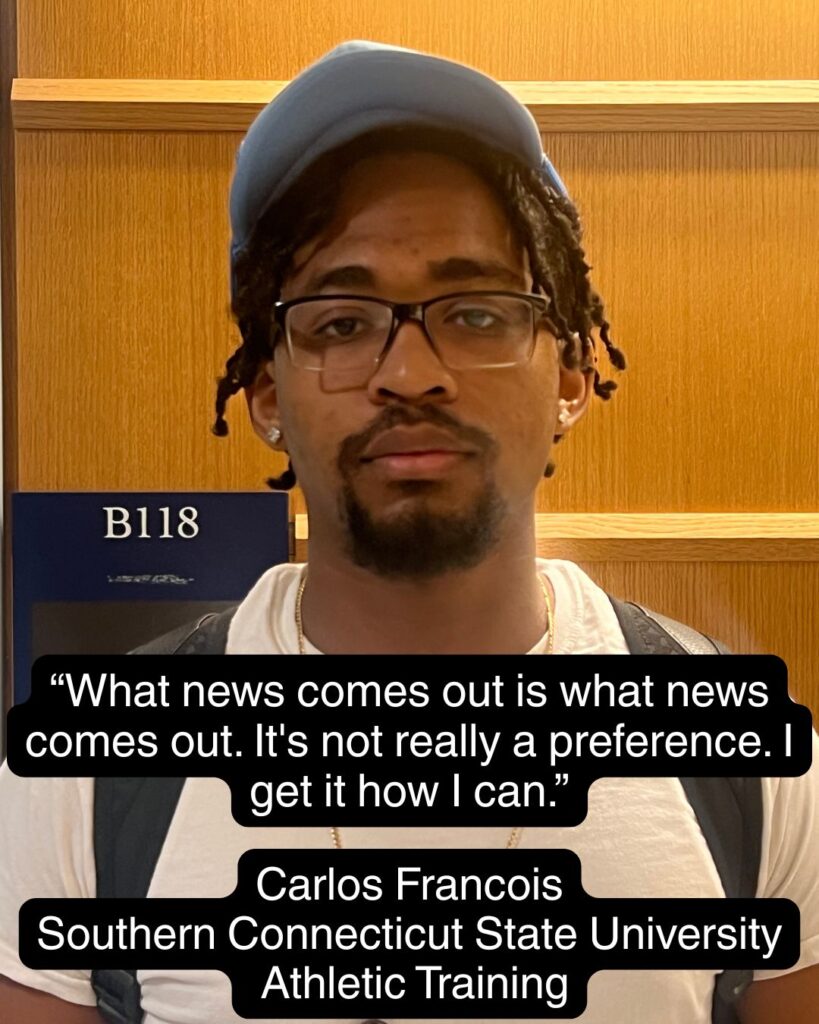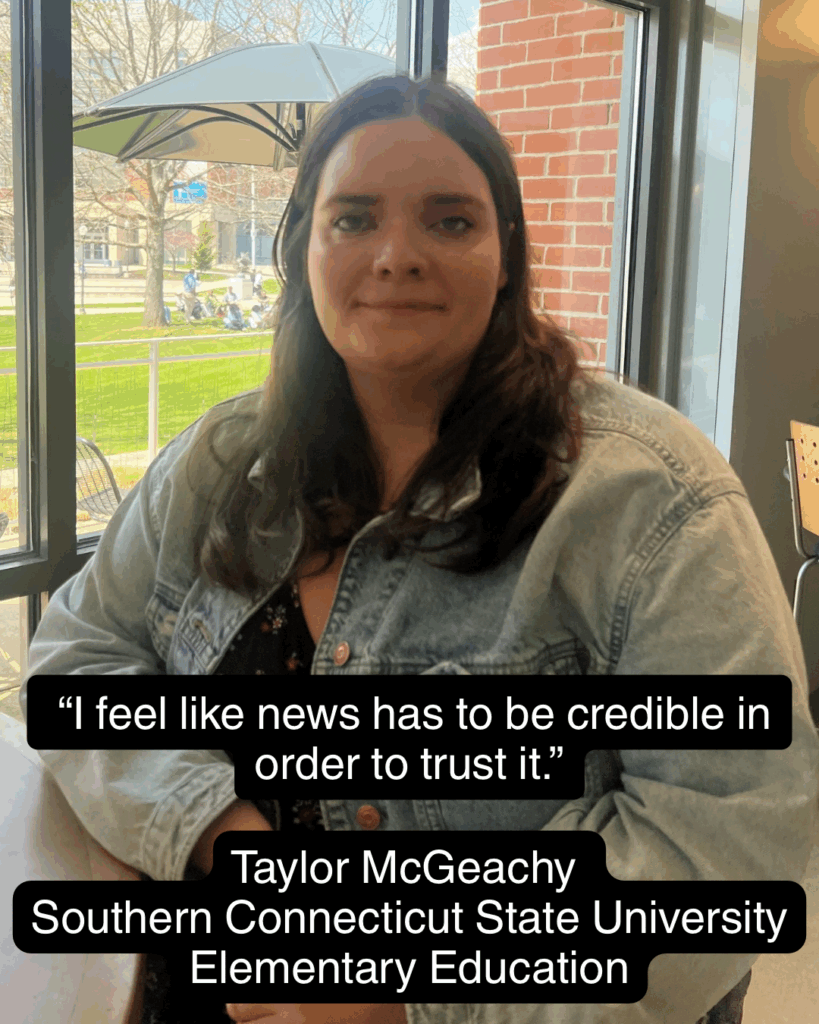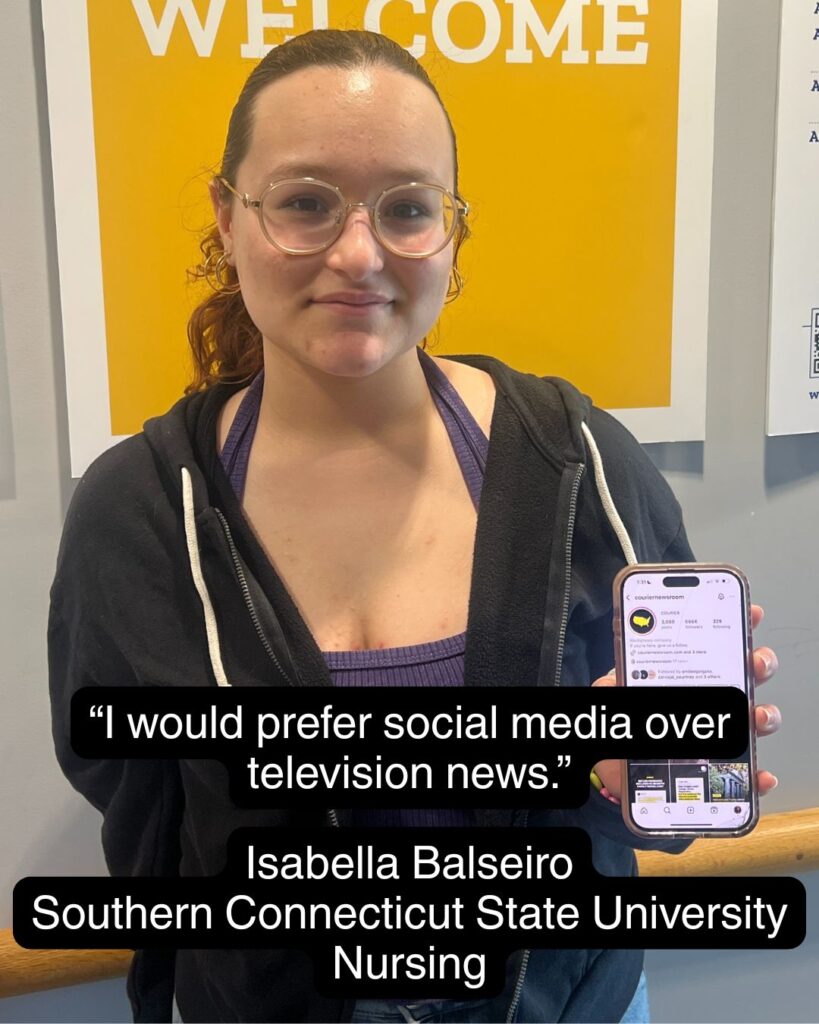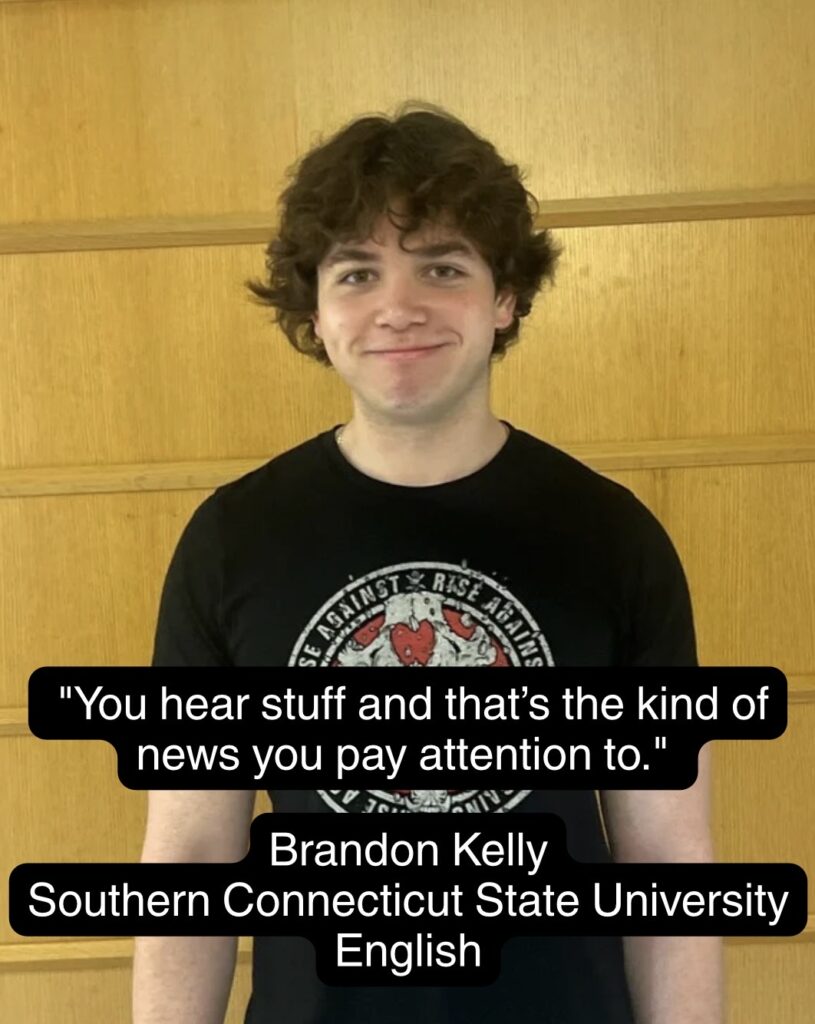Reporting by: Brandon Cortés, Miah Green, Roselyn Ilo, Avery Martin, Benjamin Martin, Solé Scott, Kahiona Senior, Melanie Vargas, Jay’Mi Vazquez, Brianna Wallen, Lexi White, Jasmine Williams
Whether it’s scrolling through Instagram posts on The Shade Room or tuning in to CNN, college students are keeping up with information that is happening in the world.
That’s according to an April 2025 survey of 116 students at Southern Connecticut State University.
More than half of those surveyed (about 65%) said they get their news from social media platforms, with many noting that news content surfaces passively through algorithm-driven feeds on TikTok, Instagram, or X (formerly Twitter).
“I get my news from TikTok because it’s easily accessible and I’m usually always on it,” psychology major Nilah Cicero, a senior, said.
Students in JRN 300: News Writing at Southern Connecticut State University conducted the survey in advance of News Engagement Day – Oct. 7 – which encourages journalists and journalism teachers to educate the public on the news media. Launched by the Association for Education in Journalism and Mass Communication in 2014, the day highlights the importance of free press and being able to inform society amid a declining attention to the news media.
According to the survey, students are more enticed to engage with news through social media apps like Instagram (70%) and TikTok (63%). In addition to traditional news sources, social media influencers on these apps tell the news from their point of view, which concerns some traditional journalists.
Social media pages mentioned by several students in the survey include The Shade Room and Impact, which cover pop culture news, and issue-specific sites and influencers such as Feminist, Ben Shapiro, Tamika Mallory. Others, like Dylan Page, repackage news reported by traditional outlets.
“The thing that concerns me the most is confirmation bias,” said Michelle Watson, news desk reporter at CNN and the Region 1 coordinator for the Society of Professional Journalists. “Every individual is subject to their own confirmation bias of what they want, what they want to believe. I feel like even if you’re not actively seeking out narrative, does that support what you believe in? When you do see something, whether it be on Facebook, TikTok, or Instagram, you’re reposting it, sharing it. And that to me, it unsettles me because I want people to be able to be free thinkers.”
For nursing major Isabella Balseiro, a junior, social media is not just a convenience, but it is a preference since she is already on her phone.
“I would prefer social media over television news,” Balseiro said.
Chris Vaccaro, an adjunct professor at Hofstra University and an experienced journalist, said the increase in social media use should prompt legacy media outlets to adapt.
“If an audience in a younger demographic finds their news on TikTok, and if your data and your research and your report suggest that, my initial thought is media companies need to do a really good job of creating vertical storytelling on TikTok and [Instagram] stories, and YouTube shorts. They need to be there,” said Vaccaro.
Pew Research Center conducted a survey in April 2025 looking at how Americans view journalists today; Young adults are more likely to accept a wider range of actions under the umbrella of journalism, the survey found.
Of the 116 Southern undergraduate students surveyed, 31 (26.7%) said they get their news from non journalists on social media. Students could select more than one option:
- 64.6% said they get news from traditional news outlets via social media
- 26.7% said they get their news from television
- 13.8% said they get their news from newspapers
- 4.3% said they get their news from the radio
- 3.4% said they get their news from news magazine
On the other hand, experts like Michael Koretzky, Society of Professional Journalists Region 3 Coordinator and Convention Director for College Media Association, argue that college students have always cared about “very narrow topics very passionately and very briefly,” but have lacked engagement with news since his own days in college during the 1980s. However, he sees current students’ news engagement not as a flaw, but as a natural stage of life.
“We didn’t care about news then, either. I know I didn’t — and I was editor of my student newspaper,” Koretzky said.
“If anything, [social media] makes finding news easier, since it emerges right in front of your face,” Koretzky said.
Some students said that they only see news when it “pops up on their feed.” What they mean by this is whatever they like to look at or watch, apps are able to detect those favorites and push those types of posts and videos to a person’s feed. If the person engages with the post, similar posts will continue to pop up.
“Media companies have to do a better job of creating content for all platforms and all audiences. I don’t think we’re at some existential crisis,” Vaccaro. “I do believe there is a ton of misinformation and disinformation, but that means that media companies have to work extra hard to make sure that their stories are clear and understandable and that they can easily be found.”
“This isn’t a problem. I believe it’s an opportunity for media and journalism to continue to evolve,” said Vaccaro.



